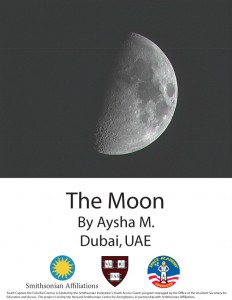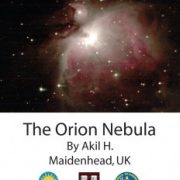Capturing the Cosmos in Huntsville
Special thanks to our guest blogger, Chris Myers, U.S. Space and Rocket Center®, Huntsville, AL for this post
Bringing the Cosmos to Space Camp®!
 At the U.S. Space and Rocket Center® and Space Camp, we are constantly looking for fun and innovative ways to teach our museum guests and trainees about space history and the science and math concepts that surround it. Naturally, we were excited to participate in the Harvard-Smithsonian Center for Astrophysics series of instructional webinars in order to get some fresh ideas and content. The creativity started to flow as we reviewed the background material, but the amount and quality of the lesson plans and information presented to us by Mary Dussault and Erin Braswell was impressive. By the end of the first hour of the webinar, we had solid ideas and lesson plans that could be implemented in every program from summer Day Camp for 5-year-olds to Advanced Space Academy® for high-school seniors. And they meet both state and national curriculum guidelines! In this case, our target subject was astronomy.
At the U.S. Space and Rocket Center® and Space Camp, we are constantly looking for fun and innovative ways to teach our museum guests and trainees about space history and the science and math concepts that surround it. Naturally, we were excited to participate in the Harvard-Smithsonian Center for Astrophysics series of instructional webinars in order to get some fresh ideas and content. The creativity started to flow as we reviewed the background material, but the amount and quality of the lesson plans and information presented to us by Mary Dussault and Erin Braswell was impressive. By the end of the first hour of the webinar, we had solid ideas and lesson plans that could be implemented in every program from summer Day Camp for 5-year-olds to Advanced Space Academy® for high-school seniors. And they meet both state and national curriculum guidelines! In this case, our target subject was astronomy.
For our younger trainees, we adapted the activities that dealt with colors and filters into a hands-on component for our astronomy briefing “Tenacious Telescopes.” We use PVC pipe, colored felt and theater lighting gel in the primary colors to teach the trainees about how real telescopes like the Hubble Space Telescope use filters to look for specific information, and how scientists can put these single-color images together to make a full-color picture. In addition to making it look more like a real telescope, mounting the color filter inside a PVC pipe telescope has the added bonus of keeping our filters fingerprint and wrinkle free.
 For our Advanced Academy (junior high to high school) trainees, we added an image processing component into our existing astronomy curriculum which is made up of four components. At the beginning of the week, the trainees participate in a lecture called “Exploring the Night Sky” where they learn the basics of astronomy and focus on finding and naming the constellations and deep space objects. Our second astronomy block is the “Micro Observatory Lab,” where our trainees use the Mobs software to compile full-color images of deep space objects. Our third astronomy block is a “Night Telescope” activity, where the trainees use real telescopes to find the same objects in the sky of which they compiled images the day before. And for our final astronomy block, our Advanced Academy trainees learn the stories behind selected constellations in our inflatable Star Lab.
For our Advanced Academy (junior high to high school) trainees, we added an image processing component into our existing astronomy curriculum which is made up of four components. At the beginning of the week, the trainees participate in a lecture called “Exploring the Night Sky” where they learn the basics of astronomy and focus on finding and naming the constellations and deep space objects. Our second astronomy block is the “Micro Observatory Lab,” where our trainees use the Mobs software to compile full-color images of deep space objects. Our third astronomy block is a “Night Telescope” activity, where the trainees use real telescopes to find the same objects in the sky of which they compiled images the day before. And for our final astronomy block, our Advanced Academy trainees learn the stories behind selected constellations in our inflatable Star Lab.
 We have been running the “Micro Observatory Lab” astronomy block since December, 2011, and have had more than 1,500 trainees from all over the world participate. We have so many students participating that we aren’t able to display all their artwork at once, so we have set up two small rotating exhibits of 12 featured photos each here at the U.S. Space and Rocket Center, one located in the Main Museum and the other located in the Science Lab used for our summer Space Academy for Educators® camp, and we plan to add a third, larger display to our computer lab this summer.
We have been running the “Micro Observatory Lab” astronomy block since December, 2011, and have had more than 1,500 trainees from all over the world participate. We have so many students participating that we aren’t able to display all their artwork at once, so we have set up two small rotating exhibits of 12 featured photos each here at the U.S. Space and Rocket Center, one located in the Main Museum and the other located in the Science Lab used for our summer Space Academy for Educators® camp, and we plan to add a third, larger display to our computer lab this summer.
These kinds of seminars and programs are what make it so awesome to be a part of the network of Smithsonian Affiliates. Imagine all the fun, innovative and educational activities you can dream up with the help of these services! So get out there and sign up for a class today! And spare a glance for the colorful cosmos while you’re at it!







